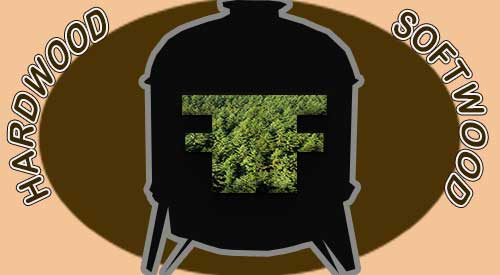Thu 31 Jan 2019
Hardwood vs Softwood For Cooking!
Posted by DonnaGRead other related stories: Cooking With Wood , Smoking Tips
No Comments

Our Discussion of Hardwood vs Softwood for Cooking
Hardwood vs. Softwood For Cooking! Share on X

What is the best wood for smoking?
Well, before you ask that question, you should want to know “What woods are safe to use for smoking?”
Hardwood vs. Softwood for Cooking- Softwoods:
Softwoods or coniferous woods should never be used for cooking because they have elevated sap levels and more air in their cell structure. This causes the wood to burn fast, hot, produce lots of sparks, and produce unpleasant flavors not ideal for flavoring foods. Let’s be clear on what a softwood is: pine, redwood, cedar, fir, spruce, hemlock, larch, cypress. These are all no-no’s!
Hardwood vs. Softwood for Cooking- Hardwoods:
Known as deciduous trees that produce broad leaves, produce a fruit or a nut, and generally go dormant in the winter, hardwoods are the woods to use for cooking and makeup roughly 40 percent of all trees in the United States.
Hardwoods are made up of mostly three materials: cellulose, hemicellulose, and lignin. Cellulose and hemicellulose are the basic material of the wood cells; lignin acts as a kind of cell-bonding glue but it is the primary material need for flavoring in barbecue. Lignin contains phenols or hydroxyl groups which are alcohols. As these compounds work together, they produce a preservative action on the food which is antibacterial in nature. Lignin modifies the surface of the smoked food as the wood burns making the food scrumptious!
Hardwood vs. Softwood for Cooking- The Lignin Compound
Although all woods contain compounds which act as a preservative providing both antioxidants and reduction in bacterial growth, there are compounds that are more toxic to people, including compounds like formaldehyde and acetic acid which provide for an overall pH level in wood. Hotter wood fires produce a higher pH level. A good example is mesquite, which produces twice the level of polycyclic aromatic hydrocarbons, or PAHs, meaning it has a pH level almost three times the level of cooler burning hardwoods like Sugar Maple and Oak. Remember, it’s PAHs that are of concern when you grill or smoke and why foods cooked by these methods can get a bad rap.
Hardwood vs. Softwood for Cooking- Orchard Woods
Don’t forget a point about orchard woods which are a hardwood.
Woods like apple, peach, and pecan are traditionally raised for their fruit and nut production meaning they are commonly sprayed with pesticides in order to ensure a productive tree. Unfortunately, these pesticides are absorbed by the tree and released when burned. That means, you release them into the cooking equipment every time you use them for grilling and smoking.
Ask questions about the wood you want to purchase, read wood packaging and look for hardwoods that are known to be ideal for wood-fired cooking like cherry, alder, ash, hickory, maple, oak, and beech. Great food memories at the grill or smoker are made when you start with the perfect smoking wood! Don’t settle for anything less.
Related reading:

More Related reading on this subject
PUT CHERRY WOOD SMOKE ON YOUR BBQ!
IS HICKORY THE WOOD TO SMOKE & GRILL WITH?
ALDER WOOD IS THE SAFE BET ON THE SMOKE FLAVOR PROFILE!
WHAT WOOD FOR SMOKING: A PRIMER
SmokinLicious® Products:
Smoker Wood Chunks
Smoking Wood Chips- Grande Sapore®, Minuto & Piccolo
Wood Blocks for Smoking
Smoker Logs- Full & Quarter Cut
Charwood

Dr. Smoke, we discuss Hardwood vs Softwood for Cooking